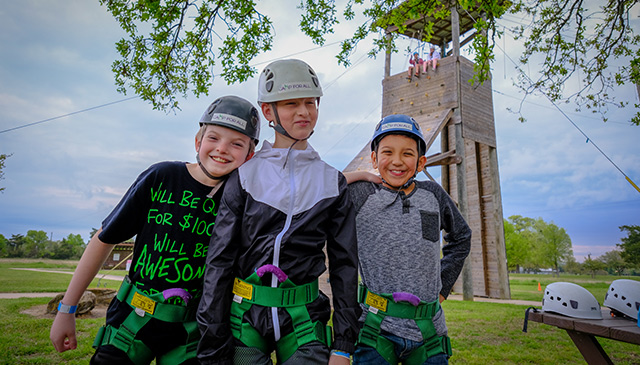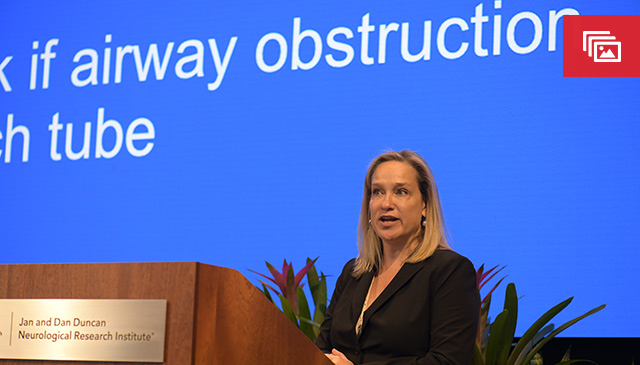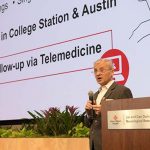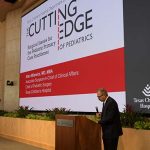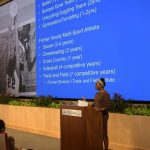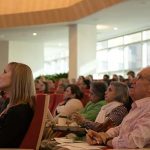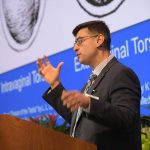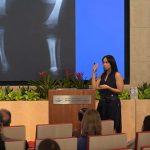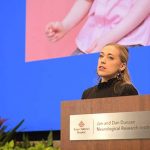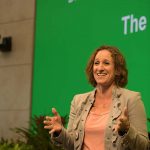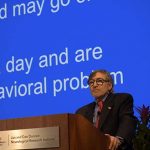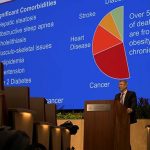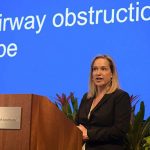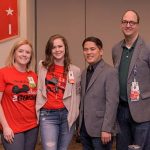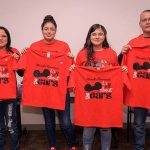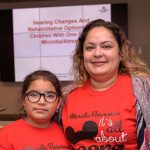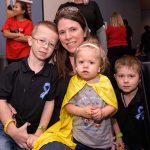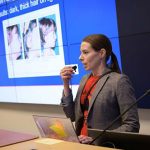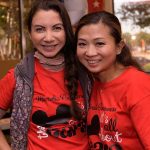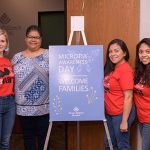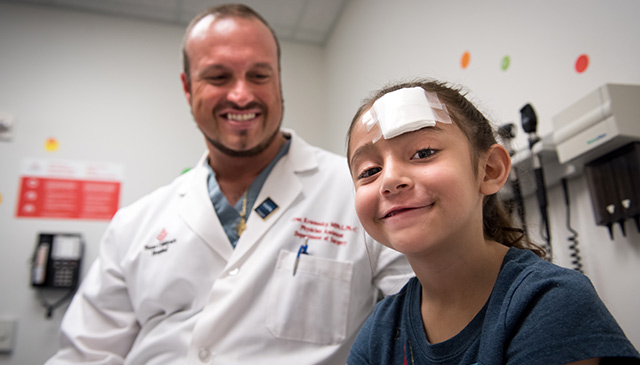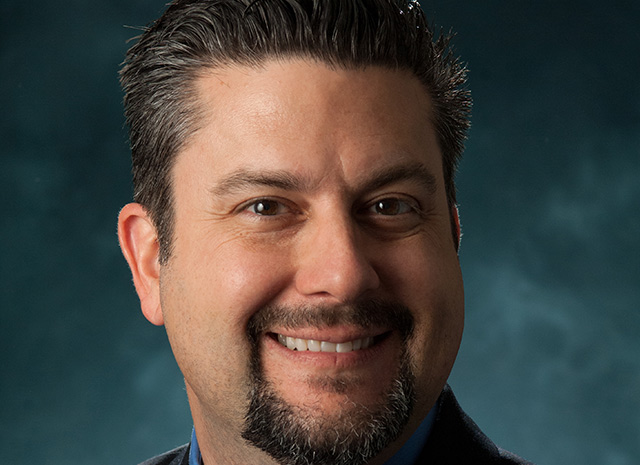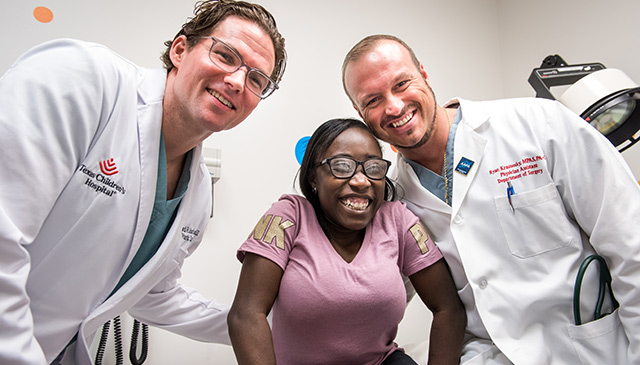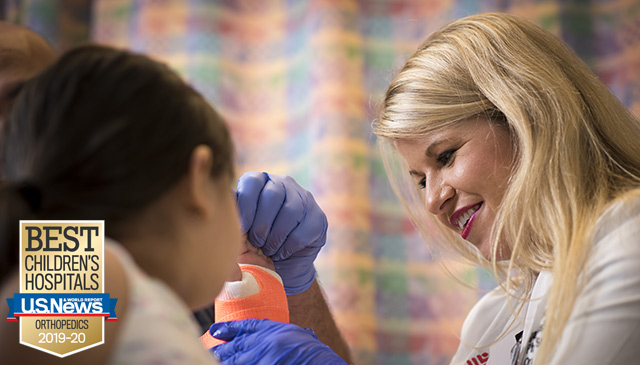January 27, 2020
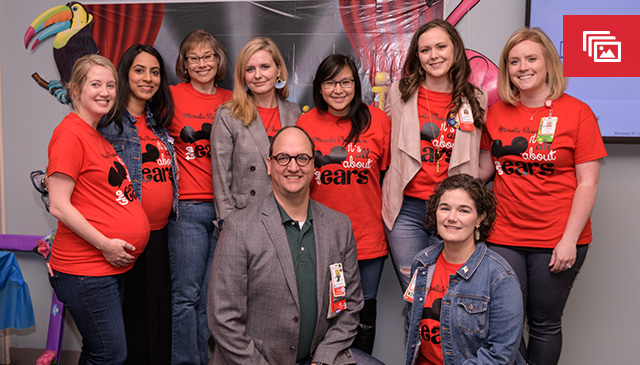
On November 9, nearly 100 people gathered at the Meyer Building for Texas Children’s Microtia Awareness Day Celebration, sponsored by the Division of Otolaryngology’s Microtia Clinic.
The event featured educational talks and Q&A sessions offered by experts across numerous Texas Children’s specialties and subspecialties, including Pediatric Otolaryngology, Plastic Surgery, Speech and Language Pathology, Audiology, Anaplastology and a patient experience testimonial. There also was a full slate of games and activities for children, such as pottery painting, face painting, a bean bag toss, Hula-Hooping and mini bowling.
For patients and families alike, it was a wonderful opportunity to meet with members of the multidisciplinary care team in Texas Children’s Microtia and Atresia Program and to interact with other families who have been affected by these rare conditions.
Microtia is a rare congenital malformation of the ear, occurring in about one in 10,000 births. Typically, the condition affects only one ear and the severity of symptoms can vary widely. In less severe cases, the ear might be slightly smaller than normal. However, in the most severe cases, the ear may be completely absent. Because the external and internal structures of the ear are so developmentally linked, children with microtia may also experience atresia – an absence or underdevelopment of the ear canal and middle ear structures. Atresia can potentially cause hearing loss and speech difficulties, which can in turn contribute to poor academic performance.
The effects of these conditions on physical appearance and on speech, hearing and learning, especially during crucial early developmental years, could potentially have a lasting negative impact on self-esteem and overall quality of life.
To meet the complex needs of patients with microtia and atresia, Texas Children’s has built the only comprehensive program in the state that offers the full spectrum of care, from reconstruction of the outer ear, to complex repair of aural atresia, to hearing aids or implants for appropriate candidates.
“With our program, we have created a one-stop shop where families have access to care for children of all ages – and our demand is high,” said Dr. Rodrigo Silva, director of Texas Children’s Ear and Hearing Center. “These conditions may be rare, but because of Houston’s size and diversity we see a very large number of patients each year.”
The Microtia and Atresia Program offers families a multidisciplinary approach to care that includes audiology, with experts trained in age-appropriate hearing testing and solutions; speech and language pathology; and surgical interventions to address cosmetic needs and hearing loss. The event gave Texas Children’s caregivers an opportunity to share the many ways we can help.
“We wanted to highlight our capabilities and let families know that we offer individualized treatment paths for each child we see,” said Dr. Yi-Chun Liu, Texas Children’s pediatric otolaryngologist and associate program director for the Microtia and Atresia Program. “Whether the child needs a reconstruction surgery of the ear or ear canal, a hearing aid or implant, speech and language therapy, or some combination of all of these, we’re committed to providing them with the best possible care.”
At the end of the event, parents were given survey cards that asked for suggestions about the kinds of information regarding microtia and atresia that families might find most helpful when starting their care journey. There was also a section for feedback and comments.
Judging by some of the responses, the event was a success.
- “The wealth of knowledge was amazing.”
- “Loved that multiple options were discussed and the importance of team partnerships.”
- “This is our second year, we will continue to come every year.”
“We’ve already had requests to make it an annual event,” said Jessie Marcet-Gonzalez, Microtia Day celebration coordinator with the Division of Otolaryngology. “We had so many volunteers who helped make this day special for our families and in letting them know that we really care.”
One patient who made the day particularly special was Liliana Montano. The 13-year-old raised the funds to make the awesome red shirts everyone was wearing at the event. Liliana donated the shirts to all attendees.
Learn more about Texas Children’s Microtia and Atresia Program by clicking here.
